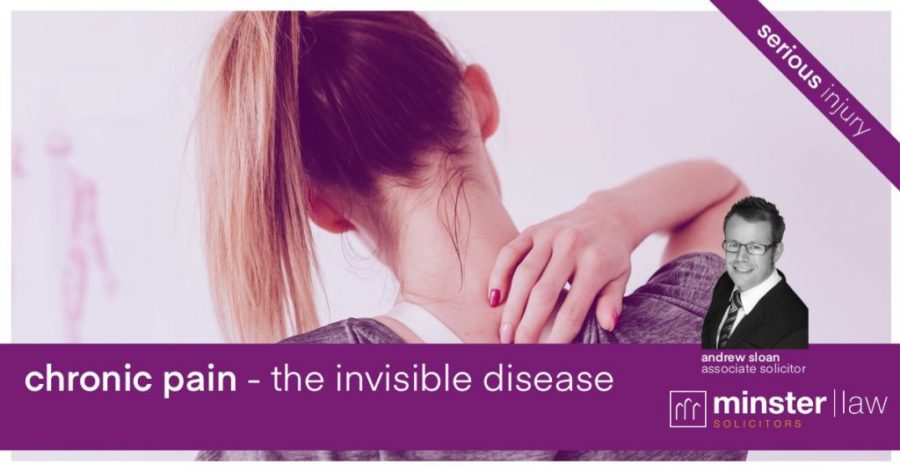Running a chronic pain case


Claimants who present with symptoms of chronic pain can lead to some of the more complex personal injury claims, Associate Solicitor Andrew Sloan, who specialises in these difficult cases, shares some insight into the process involved in running a case for chronic pain.
It is most important to be aware of the claimant’s symptoms, and work on the premise there could be a link between the initial trauma and the onset of significant deterioration in the claimant’s medical condition. Solicitors should not simply dismiss that claimant.
If a client appears to be developing an underlying pain condition, then the file handler cannot take the initial medical report and what has been said at face value. One cannot rely on the report to consider if a pain condition is evolving and it is the file handler’s responsibility to identify any red flags which may give rise to a pain case. The sooner a solicitor can see a potential pain condition evolving the better.
More often than not most claimants will return to full recovery within the few months of their prognosis, but others will not. What I find perhaps most amazing is the short space of time within which an expert is able to take a full, details account of what happened, the injuries sustained and the effects thereafter.
The initial medico legal appointment can be the 15 minutes upon which many cases are resolve and a fault of the system is that it can fail to consider complaints made which point to symptoms outside of the initial trauma site, symptoms which could leak to a chronic pain condition.
The next stage after securing medical records is typically the instruction of an orthopaedic expert, but I am not entirely convinced this is the right way to proceed. Whiplash is a muscular injury, and orthopaedic experts are bone specialists. The difficulty with medical reporting proceeding this way is this commonly results in symptoms being linked to an acceleration of a pre-existing degenerative issue from an asymptomatic to a symptomatic condition. While this is a joy for the insurance industry it can be a difficult conversation to have with a claimant suffering from unexplained chronic pain.
But, is this the end of the line for the client? What if the pain they are suffering is beyond what could be expected in a normal degenerative condition?
In the case of Beard v Skanska an injury at work caused soft tissue injury to the spine. The orthopaedic experts involved determined the accident had accelerated the symptoms of a pre-existing degenerative spine by a period of 12-months.
While most cases would settle based on that projected time period, a referral was made to a pain expert who formed the view the claimant had in fact gone on to develop a chronic pain syndrome.
It was accepted that in the absence of the accident the claimant would have had back pain, but they would have been able to cope by the gradual onset. In this instance the effects of the index accident were significant.
Therefore, it is of vital importance when running a Chronic Pain case that thought and consideration be given to the instruction of the appropriate expert.
The securing of all records pre- and post-accident is particularly important in a pain case and it is imperative a thorough review be undertaken when preparing the letter of instruction to the medical expert. A chronology would be of benefit. Too often experts provided with a significant amount of records may miss key entries.
In most cases you will find through looking at the past a claimant has vulnerability to developing a pain condition. This can offer a reason as the why that particular claimant has developed a pain condition.
Employment and CRU records will also play an important role and should be obtained as a matter of course. They should be obtained and analysed.
Witness evidence of how the client was before and after the accident is crucial. The taking of statements, cross referencing with medical records if time allows should be undertaken. Pre accident records can be attached and explanations to the entry will prove to be of benefit.
The pitfalls of any claim is the client being observed on surveillance doing precisely what they report they cannot do.
Every client should be given the warning and advised of the importance of language and the use of phrases.
“I can’t do the shopping, the pain is too much, I can only walk 100 metres before having to stop and rest” – that is a pretty definitive statement, the statement is served and then one week later surveillance arrives and low and behold your client is at the supermarket walking around, perhaps unaided, for over 30-minutes.
Now compare to the following,
“I try and do the shopping and will do my best. I will go especially if it’s on a good day. I can walk, but it’s painful. I try. It’s the next day it will have a real impact on me.” People have a limited pot of energy and thus if on one day they are filmed out and about and the next day they are at home all day that needs to be explained in the statement.
This change in language used in a statement can serve to undermine any subsequent surveillance. The client may well be filmed shopping, but they haven’t said they can’t.
The slight change between I try, and I can’t is significant in the scheme of the case.
So, what of treatment? This will be followed up in the next update.